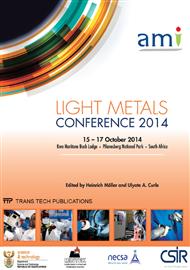p.225
p.231
p.241
p.248
p.254
p.259
p.266
p.273
p.280
Establishing the Optimal Process Parameters for the Laser Sintering of Ti64 for Layer Thicknesses of 15 μm and 30 μm and Validation of a Melt Pool Simulation Model
Abstract:
Direct Metal Laser Sintering (DMLS) is a layer-by-layer Additive Manufacturing (AM) process that creates physical metal parts from three dimensional Computer Aided Design (CAD) data. For DMLS to be generally accepted by industry as a manufacturing technology, high mechanical integrity of final components needs to be demonstrated. Mechanical properties of manufactured components are directly affected by the quality of each individual laser sintered track of each consecutive layer. In this study, the optimal ratio of laser power and scanning speed on single tracks is determined for Titanium-6Al-4V powder on an EOSINT M270 DMLS machine for a layer thickness that varies between 15 μm and 30 μm. Two different laser powers, namely 150 W and 170 W were considered. Scanning speeds varied between 600 mm/s to 2000 mm/s with 200 mm/s intervals. The most stable tracks resulted from high laser power, slow scanning speed and thin powder distribution. The empirical data were compared to a melt pool width prediction program, which was found to underestimate track width at all scanning speeds and re-melting depth at low scanning speeds. Further, it was found that decreased powder thickness can be used with an increased scanning speed and high laser power. This strategy may be used to increase surface quality. The penetration data during fusion of the tracks onto the building platform further validates the quality of each sintered track.
Info:
Periodical:
Pages:
254-258
Citation:
Online since:
October 2014
Authors:
Price:
Сopyright:
© 2014 Trans Tech Publications Ltd. All Rights Reserved
Share:
Citation:


